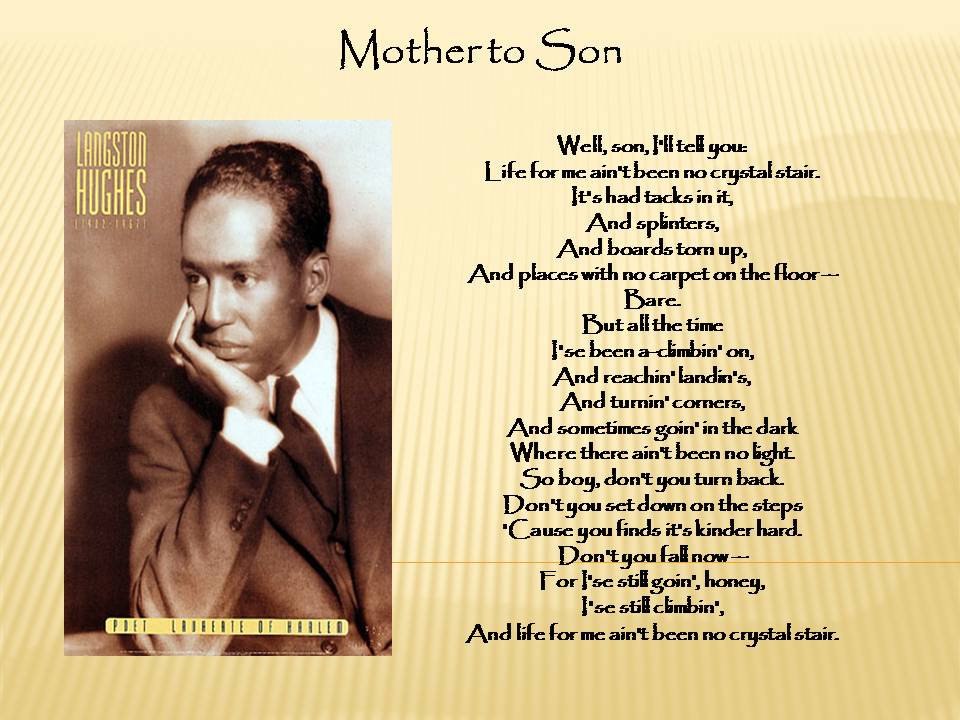
Hughes's maternal grandmother Mary Patterson was of African-American, French, English and Native American descent. The other putative paternal ancestor whom Hughes named was Silas Cushenberry, a slave trader of Clark County, who Hughes claimed to be Jewish. According to Hughes, one of these men was Sam Clay, a Scottish-American whiskey distiller of Henry County, said to be a relative of statesman Henry Clay. Both of Hughes' paternal great-grandmothers were enslaved Africans, and both of his paternal great-grandfathers were white slave owners in Kentucky. Like many African-Americans, Hughes had a complex ancestry. From 1942 to 1962, as the civil rights movement was gaining traction, he wrote an in-depth weekly column in a leading black newspaper, The Chicago Defender. He also published several nonfiction works. In addition to poetry, Hughes wrote plays and short stories. He eventually graduated from Lincoln University. Although he dropped out, he gained notice from New York publishers, first in The Crisis magazine and then from book publishers, and became known in the creative community in Harlem. He graduated from high school in Cleveland, Ohio, and soon began studies at Columbia University in New York City. He moved to New York City as a young man, where he made his career. Growing up in a series of Midwestern towns, Hughes became a prolific writer at an early age.


He famously wrote about the period that "the Negro was in vogue", which was later paraphrased as "when Harlem was in vogue." One of the earliest innovators of the literary art form called jazz poetry, Hughes is best known as a leader of the Harlem Renaissance. (Mar.James Mercer Langston Hughes (Febru – May 22, 1967) was an American poet, social activist, novelist, playwright, and columnist from Joplin, Missouri. Illustrator’s agent: Rebecca Sherman, Writers.

A quiet but welcome introduction to the writer’s work for the very young. Swirls of grass and celestial orbs embellish daytime scenes, while the lights of tall buildings join with the stars above to form a backdrop for several nocturnal spreads. “Moon,/ Moon,/ Great diamond moon” shows the white-gowned, long-haired mother floating among the clouds, holding her son up so he can see the shining disk in a dark, gray-blue sky. He renders “A necklace of stars” with a bird flying around mother and child, leaving a trail of stars around the woman’s neck. Qualls (Freedom Song) keeps his artwork simple, painting a series of spreads that hew closely to the words. The poem’s images of night and innocence are well suited for a picture book, too. “My little dark baby,/ My little earth-thing,/ My little love-one,/ What shall I sing/ For your lullaby?” Hughes wrote this poem more than 80 years ago, but its playful language and informal lines sound startlingly fresh and modern.


 0 kommentar(er)
0 kommentar(er)
